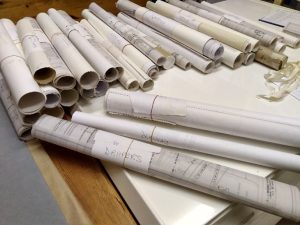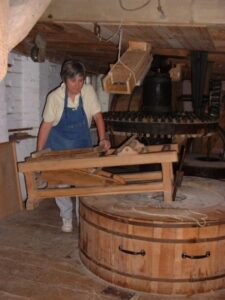
Priority Collections
Getting our priorities in order With 286 collections in our archive, ranging from 1 to over 200 boxes in size, it is important for us
Filter posts by tag:

Getting our priorities in order With 286 collections in our archive, ranging from 1 to over 200 boxes in size, it is important for us
Authors: Nathanael Hodge & Laura Felton-Hustwitt The John Munnings Collection contains detailed watermill sketches by artist John Munnings, together with his notes and the typescript for a
The James Venn Collection is in fact two collections, one built on top of the other. The story starts with Stanley Freese, who in the 1920s and
The Over Family Collection contains records relating to the family’s work in milling in the 19th and 20th centuries, a period of significant change in the milling
Peter Dolman was a millwright and mill expert from Suffolk. His extensive collection contains photographs and research on wind and watermills throughout the UK. PETER DOLMAN’S LIFE WORKING
A millwright for many years, Derek Ogden repaired mills throughout the UK until he moved to the USA in 1974, continuing his mill work across
Geoff Holman came from a family of millwrights, the Holmans of Canterbury, and this milling connection in his family sparked a life long interest in traditional mills. His
Emilie Montgomery Gardner, known to the milling world as E. M. Gardner, remains an elusive and enigmatic character shrouded in mystery. Miss Gardner worked as
The iron foundry of Bodley & Co was located on Commercial Road in Exeter, Devon. Much archival material, relating to mills for which parts were

Mildred M. Cookson’s collection is one of the four Foundation Collections of the Mills Archive, and is one of the most nationally significant sets of mill-related